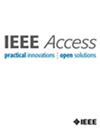Testbed as a RegUlatory Science Tool (TRUST): A Testbed Design for Evaluating 5G-Enabled Medical Devices
IF 3.4
3区 计算机科学
Q2 COMPUTER SCIENCE, INFORMATION SYSTEMS
引用次数: 0
Abstract
The fifth-generation (5G) cellular communication technology introduces technical advances that can expand medical device access to connectivity services. However, assessing the safety and effectiveness of emerging 5G-enabled medical devices is challenging as relevant evaluation methods have not yet been established. In this paper, we propose a design model for 5G testbed as a regulatory science tool (TRUST) for assessing 5G connectivity enablers of medical device functions. Specifically, we first identify application specific testing needs and general testing protocols. Next, we outline the selection and customization of key system components to create a 5G testbed. A TRUST demonstration is documented through a realistic 5G testbed implementation along with the deployment of a custom-built example use-case for 5G-enabled medical extended reality (MXR). Detailed configurations, example collected data, and implementation challenges are presented. The openness of the TRUST design model allows a TRUST testbed to be easily extended and customized to incorporate available resources and address the evaluation needs of different stakeholders.作为监管科学工具的试验台(TRUST):评估5G医疗设备的试验台设计
第五代(5G)蜂窝通信技术引入了技术进步,可以扩大医疗设备对连接服务的访问。然而,由于相关评估方法尚未建立,评估新兴5G医疗设备的安全性和有效性具有挑战性。在本文中,我们提出了一个5G试验台的设计模型,作为评估医疗设备功能的5G连接使能因素的监管科学工具(TRUST)。具体来说,我们首先确定特定于应用程序的测试需求和通用测试协议。接下来,我们概述了关键系统组件的选择和定制,以创建5G试验台。TRUST演示通过真实的5G试验台实现以及5G医疗扩展现实(MXR)定制示例用例的部署进行了记录。介绍了详细的配置、示例收集的数据以及实施方面的挑战。TRUST设计模型的开放性使TRUST试验台能够轻松扩展和定制,以整合可用资源并满足不同利益相关者的评估需求。
本文章由计算机程序翻译,如有差异,请以英文原文为准。
求助全文
约1分钟内获得全文
求助全文
来源期刊

IEEE Access
COMPUTER SCIENCE, INFORMATION SYSTEMSENGIN-ENGINEERING, ELECTRICAL & ELECTRONIC
CiteScore
9.80
自引率
7.70%
发文量
6673
审稿时长
6 weeks
期刊介绍:
IEEE Access® is a multidisciplinary, open access (OA), applications-oriented, all-electronic archival journal that continuously presents the results of original research or development across all of IEEE''s fields of interest.
IEEE Access will publish articles that are of high interest to readers, original, technically correct, and clearly presented. Supported by author publication charges (APC), its hallmarks are a rapid peer review and publication process with open access to all readers. Unlike IEEE''s traditional Transactions or Journals, reviews are "binary", in that reviewers will either Accept or Reject an article in the form it is submitted in order to achieve rapid turnaround. Especially encouraged are submissions on:
Multidisciplinary topics, or applications-oriented articles and negative results that do not fit within the scope of IEEE''s traditional journals.
Practical articles discussing new experiments or measurement techniques, interesting solutions to engineering.
Development of new or improved fabrication or manufacturing techniques.
Reviews or survey articles of new or evolving fields oriented to assist others in understanding the new area.
 求助内容:
求助内容: 应助结果提醒方式:
应助结果提醒方式:


